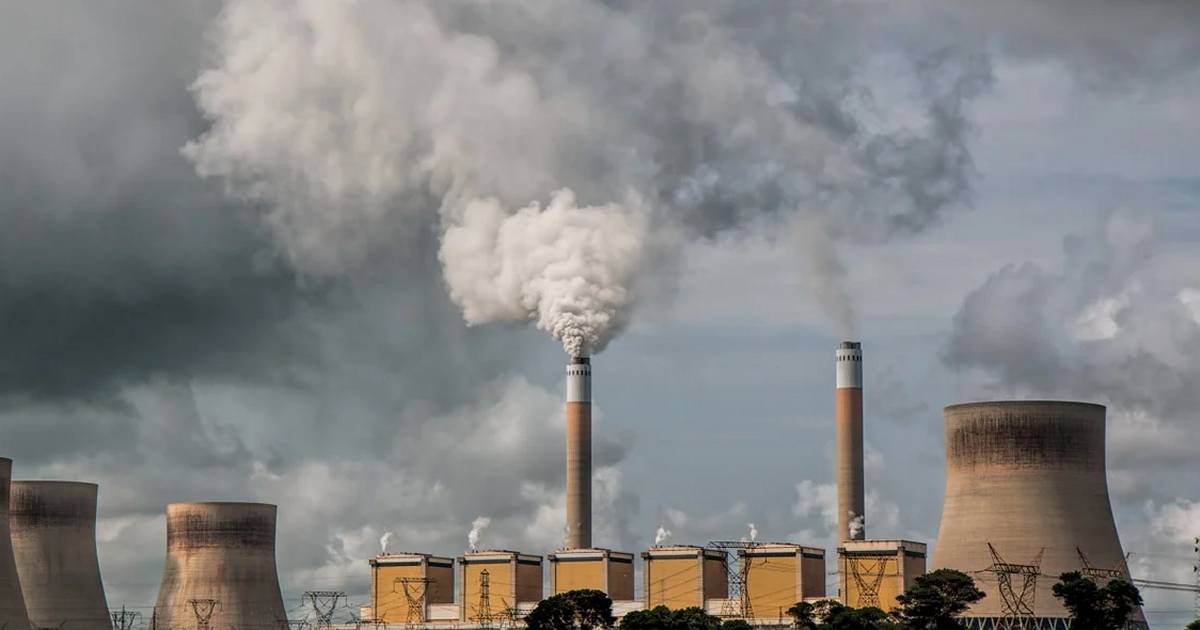
The International Energy Agency (IEA) has warned the world is well off track on electricity generation related emissions after coal power saw a resurgence last year.
The IEA’s January 2022 Electricity Market Report indicates global electricity demand surged in 2021 by 1,500 terawatt-hours, driving the power sector’s emissions to a global record high.
While electricity from renewables grew by 6% last year, coal power generation jumped by 9%, gas by 2% and nuclear by 3.5%. After having declined the previous two years, carbon dioxide emissions from electricity rose by 7%.
Emissions from electricity generation need to drop 55% by 2030 in order to meet the IEA’s Net Zero Emissions by 2050 Scenario. But IEA Executive Director Fatih Birol says emissions are set to remain around the same level for around three years in the absence of major policy shifts from governments.
“Not only does this highlight how far off track we currently are from a pathway to net zero emissions by 2050, but it also underscores the massive changes needed for the electricity sector to fulfil its critical role in decarbonising the broader energy system.”
The report notes last year’s high gas prices saw fuel switching from gas to coal in the United States and Europe, and in October the Chinese government authorised several previously shuttered coal mines to reopen and new mines to start production.
Looking to this year and out to 2024, the IEA anticipates electricity demand growing 2.7% a year on average; but that depends on how the pandemic and energy prices pan out. It says renewables are set to grow by 8% per year on average, which will meet more than 90% of net demand growth during this period..
What About Australia?
Australian electricity demand saw close to 1% growth last year and the IEA expects it to surpass 2019 levels in 2022, with slow continued growth of an average 1% per annum out to 2024.
While coal power made up around 53% of electricity generation in Australia last year, the IEA forecasts a slow decline following capacity retirements – including the closure of Liddell Power Station’s first unit (500 MW) in April this year and the remainder (1,500 MW) in April next year.
The report forecasts coal’s share in Australia’s electricity mix to drop to around 47% in 2024.
Renewable generation grew by around 18% in 2021 year-on-year in Australia, with 1.3 GW of new wind capacity and 4.7 GW of solar PV added – and growth is expected to follow a similar pace up to 2024. The report notes gas-fired electricity generation in Australia fell by around 16% in 2021 and is expected to decline further by around 3% per year on average to 2024.
But Australia can’t be smug – after all, 47% coal power is still too way too much, and we’re the Typhoid Mary of emissions given our fossil fuel exports and how much manufacturing we outsource.
According to the Australian Government’s December 2021 Resources and Energy Quarterly, our thermal coal exports dropped from 213 million tonnes in 2019–20 to 192 million tonnes in 2020–21, but are to reach 204 million tonnes by 2022–23. Even given the drop in 2019–20, Australia was the world’s second largest exporter of thermal coal.
IEA projections should always be treated with a grain of salt – or several – as it has often underestimated renewable energy’s march at the best of times, and these are particularly unstable times. The full January 2022 Electricity Market Report can be found here.

 RSS - Posts
RSS - Posts



Per the report. Coal made up 64% of power generation in 2021, and coal comprised well over half the increase in electricity generated. This despite Beijing’s trade war against Australia and its coal, China’s inability to secure sufficient supplies, and prices soaring to the point that coal plants made losses.
While figures are unclear – or I skimmed over them, it appears roughly 900 TWh of coal was added last year – almost two-thirds of the new generation. Of this roughly half was from China alone, and with China being focused on expansion rather than replacing coal with solar or wind, their share of ‘climate emissions’ will only continue to soar.
Globally coal use rose 8.5% but the IEA suggests it has almost peaked – it’ll rise by less than 1% over the next 3 years. Of course if China remains focused on growth rather than Western climate change fears …
There has been little change in China’s coal consumption for over 10 years while it has been gradually decreasing as a share of electricity generation over that time. A sudden rise in coal consumption beyond the current ramping up of the world economy would be most peculiar.
Various articles on the internet indicate that sea levels are rising faster than the global average rate in those Chinese regions that have ocean foreshores . eg.
https://www.aninews.in/news/world/asia/chinas-coastal-areas-face-increasing-risks-from-rising-sea-levels-report20210505230700/
https://www.jstor.org/stable/25735702
https://chinadialogue.net/en/climate/8529-chinese-cities-most-at-risk-from-rising-sea-levels/
The ‘China Dialogue’ 2016 article above states:
“Roughly a quarter of the world’s people who live on land at risk from 4C warming are living in China. That is more that twice as many as who live on vulnerable land in Europe and the US combined,” said Climate Central’s lead scientist, Benjamin Strauss”
There have also been land subsidence issues in some areas in the past, arising from water extraction from aquifers, along with – in at least one known case – an association with coal mining activities. See:
https://www.mdpi.com/1660-4601/17/4/1170/htm
Although global emission levels from coal powered generation may have risen compared to the previous year, to some degree that rise is seems pretty much a ‘blip on the radar’ to me, as businesses world-wide attempt to recover from the general decline in economic activity brought about by COVID 19.